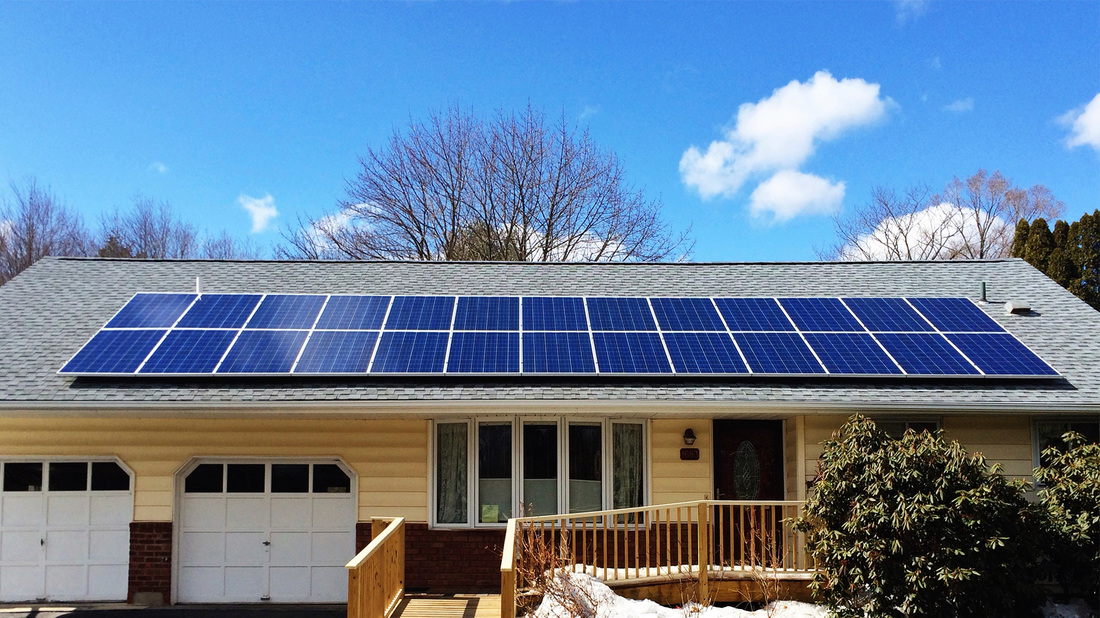|
We know. It’s tax season and you’re knee-deep in paperwork and you already dipped into your savings to remodel your home last year and now you have to pay more money to the IRS and you just want it all to end already. Wait, back the truck up. Did you say you remodeled your home? You might be in luck. If you’ve made the right kind of renovations, you could deduct the expense or even get a tax credit—which promises to significantly lower (or even eliminate) the amount you owe to the IRS. And if you’re planning to renovate—or even to buy a home that could require renovations—you’d do well to approach it so you can reap these rewards, too. Here are four big renovations that can lower your tax bill. Energy generators Under the Residential Energy Efficient Property Credit, homeowners can receive a tax credit for alternative energy equipment installed in your home. (Yes, that’s a tax credit, which is directly subtracted from the amount you owe, as opposed to a deduction, which simply lowers your taxable income.) Homeowners receive credit for up to 30% of the cost of purchasing and installing “alternative energy equipment,” defined by the IRS as solar electric systems, solar water heaters, wind turbines, or geothermal heat pumps. You can also receive credits for residential fuel cells, capped at $500 per kilowatt of energy capacity. Granted, these are all expensive additions—a wind turbine capable of powering your entire property costs $30,000 on average—but they pay back big, come tax time. Home improvements paid for by your mortgage Here’s a sneaky trick to get a small tax benefit from home improvements that might not otherwise be deductible: Make renovations immediately after purchase and take out a larger mortgage to cover the added expense. Your mortgage interest is deductible, and the IRS doesn’t discriminate based on whether some of the funds went toward a remodel. You can also decide to renovate later and still receive the same benefits: A home equity line of credit and home improvement loans are also tax-deductible. This may not be a huge advantage, though, especially if you could have paid for the renovations outright. It’s still a loan, and you’re paying interest. But if you would need to borrow money to afford renovations anyway, this way allows you to save some of that cash on your tax return. Medical necessities If you are or a family member is disabled or affected by a serious illness, medically necessary home improvements can be deducted from your income. There’s a wide variety of potential tax savings, depending on your condition and which improvements you make, but some common expenses are installing a wheelchair ramp, widening doorways, lowering the cabinets, and grading the ground to provide easier access. Medical deductions require itemizing through Schedule A, and chances are taking the standard deduction will still mean a bigger tax return unless your medical expenses topped 10% of your adjusted gross income. But major home improvements are a great opportunity to meet that milestone—just check with your doctor and tax accountant to ensure they’re medically necessary. Energy-efficient additions Coughing up tens of thousands of dollars for high-cost energy additions such as solar water heaters and heat pumps isn’t the only way to take advantage of Uncle Sam’s green tax credit. You can do simple improvements, too: Swapping in energy-efficient doors, windows, or skylights qualifies for the credit of up to $500. “The energy property credits are some of the best,” says Crystal Stranger, the tax operations director at 1st Tax Services. Unlike energy generator credits or medically required alterations, it is easy for most homeowners to qualify for several credits after a normal year’s worth of improvements—without spending a ton of money. Just make sure you pay close attention to the qualifications. New additions must be Energy Star–rated and installed in your principal residence, meaning rental improvements are, unfortunately, beneficial only to the world and not your tax bill. This benefit isn’t just for your fancy new windows and doors. Here are a few more exciting examples of energy-efficient changes that pay back on your tax return. (Remember, the cumulative total of these upgrades can be no more than $500 per year.) HVAC upgrades: Installing an electric heat pump water heater can net you $300, as long as its energy factor is at least 2.0. An advanced main air-circulating fan is worth $50 in tax credits, as long as it uses no more than 2% of the furnace’s total energy. A high-efficiency central air conditioner is worth $300 in tax credits. Roofing: A new asphalt or metal roof designed to reduce heat gain earns back 10% of its total cost. Insulation: Installing new insulation systems or materials also equates to a 10% return in credits—again, not including labor. This tax credit is as good a reason as any to actively seek out energy-efficient changes whenever you’re making improvements to your house. Choosing to pay slightly more for an Energy Star window can end up cheaper in the long run—and all you have to do is ask. Source: Realtor
0 Comments
Leave a Reply. |
Tress RealtyTress Realty Group compiles some of the best real estate news, tips, and information for buyers, sellers and investors. Archives
April 2020
Categories
All
|
Home
Use of the information and data contained within this site or these pages is at your sole risk. If you rely on the information on this site you are responsible for ensuring by independent verification its accuracy, currency or completeness. It is provided “as is” without express or implied warranty.
Some properties which appear on this web-site may no longer be available because they are under contract, have been sold or are no longer being offered for sale. Images uses for navigation may be for properties in different towns, and are not intended to be considered anything other than representative of the types of houses that may be found in a particular municipality. All data and/or search facilities on this site are for consumer's personal, non-commercial use and may not be used for any purpose other than to identify prospective properties that consumers may be interested in purchasing.
Tress Realty Group cannot guarantee the accuracy of the IDX/MLS data created by outside parties. Tress Realty Group further assumes no responsibility for any misleading content or incorrectly listed information due to such negligence. All ancillary information presented on this web-site is not guaranteed and should be independently verified by the users of this site. Tress Realty Group makes no warranty, either expressed or implied, as to the accuracy of the data contained within or obtained from this web-site.
Tress Realty Group accepts no liability for any interference with or damage to a user’s computer, software or data occurring in connection with or relating to this Site or its use or any website linked to this site. Further, Tress Realty Group has provided Hypertext links to a number of sites as a service only. This should NOT be taken as implying any link between us and those various organizations or individuals.
Disclaimer: this website may be supported by ads and participation in affiliate programs. We may earn a commission when you click our links. The information included in this post is for informational purposes only and should not be taken as legal or financial advice.
Site copyrighted by Tress Realty Group LLC © 2016-2022, all rights reserved.


 RSS Feed
RSS Feed